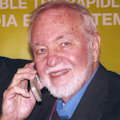Chips Help Carrier Ethernet Replace Legacy Networking Solutions
With the Brooklyn-10 and Hudson large-scale networking chips from Lightstorm Networks, designers can use carrier Ethernet to replace existing Sonet/SDH and ATM/frame-relay infrastructures. The Hudson is an operations, administration, and maintenance (OAM) service accelerator or coprocessor for the Brooklyn-10 carriergrade, 20-Gbit/s layer 2 switch.
Carrier Ethernet is scalable. It provides service management, quality of service, protection, and voice and circuit emulation support for time-division multiplexing (TDM). Because of its lower cost, more and more metro-area networks (MANs) are moving to carrier Ethernet to replace existing or new infrastructure now using ATM, frame relay, or Sonet/SDH. With more affordable 10-Gigabit Ethernet (10GE) and the forthcoming 100-Gigabit Ethernet, expect more carrier Ethernet. If you’re designing carrier Ethernet switches or other MAN/wide-area network (WAN) equipment, these chips are definitely worth a look (see the figure).
The Brooklyn-10 eliminates the complex network processors in older designs that require programming. This register-configurable ASSP hard-wires a 20-Gbit/s carrier Ethernet layer 2 switch. The chip has an integrated traffic manager and supports frame sizes from 64 bytes to 9216-byte jumbo frames. It’s used with the Solas software suite and fully complies with all relevant IEEE, IETF, and ITU standards in addition to MEF 9 and MEF 14 specifications.
The Hudson chip offloads the control processor from the generation, reception, and processing of the high-frequency connectivity check messages (CCMs) by abstracting the software requirements into a low-cost standard FPGA. The Hudson FPGA increases the number of maintenance associations (MAs) that can be accommodated for monitoring the health and performance of Ethernet virtual connections (EVCs). Hudson supports the IEEE 802.1ag CFM, ITU Y.1731, and IETF VCCV standards.
The Brooklyn-10 and the Hudson will be generally available in the first quarter of 2008.
About the Author

Louis E. Frenzel
Click here to find more of Lou's articles on Electronic Design.